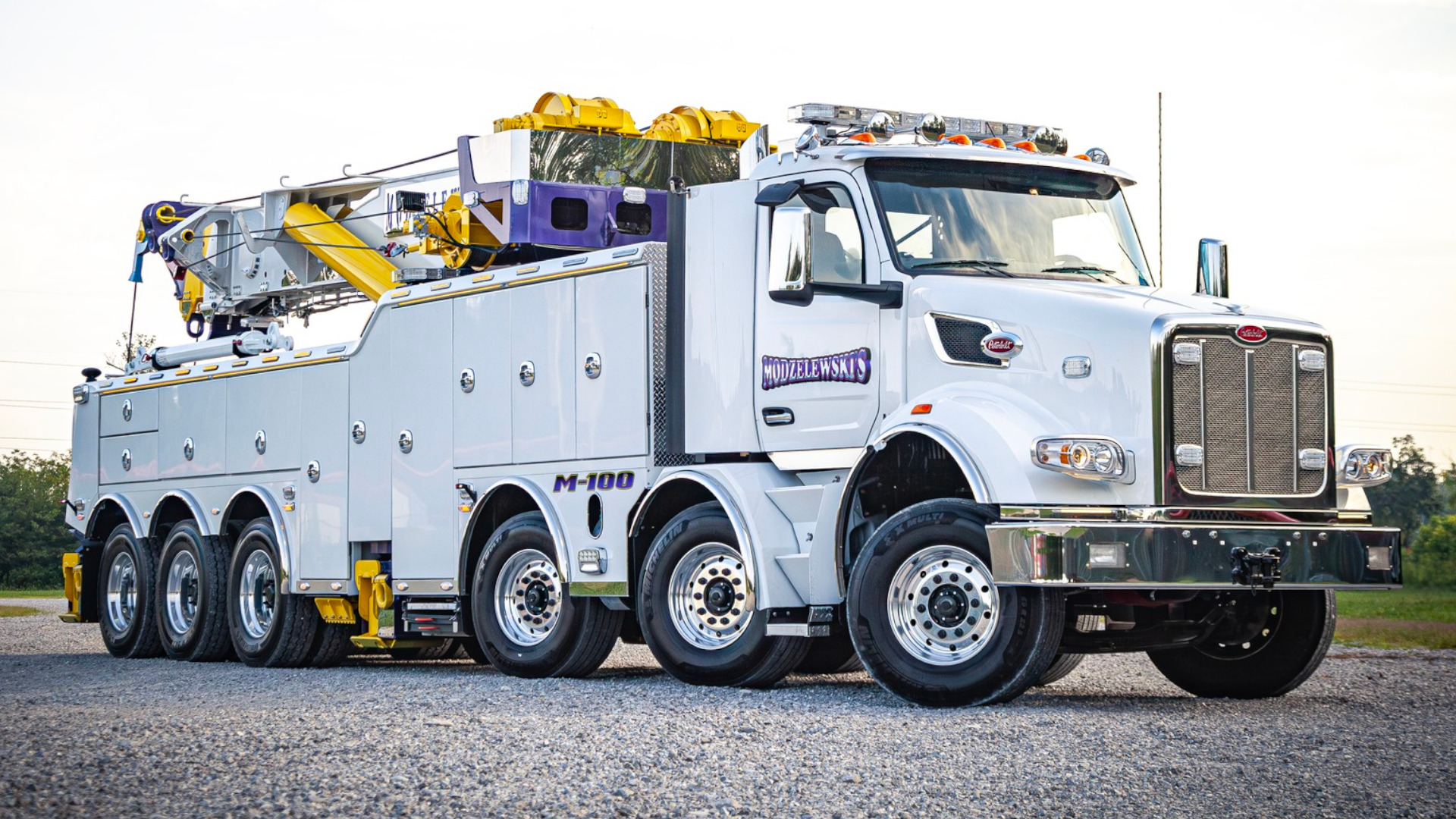

If you drive a regular car, a simple tow truck will be enough to haul it away in the event it breaks down. Bigger vehicles naturally need bigger tow rigs, however, and that’s precisely the business Miller Industries is involved in. This particular recovery rig is bigger than anything it has done before.
The company’s latest effort is a gigantic wrecker known as the Century M100. Traditionally available as a twin-steer truck, Miller suggests this new build may be the world’s first tri-steer wrecker. Built on a Peterbilt chassis for Modzelewski’s Recovery and Heavy Hauling in Danbury, Connecticut, the towing provider is claiming it to be the biggest tow truck in the world.


The regular Century M100 is already one of the world’s largest rotator trucks in its original twin-steer, five-axle configuration. It features a boom height of over 53 feet and a 100-ton capacity, and with a 360-degree crane on the back, it can cover a working area of over 8,000 square feet. The Drive reached out to Miller Industries, which confirmed the tri-steer variant boasts those same capable specs. This rig has to weigh around 100,000 pounds since a normal Century M100 weighs roughly 90,000 pounds.
It’s not uncommon for heavy-duty trucks to use a twin-steer configuration that allows them to better handle extreme loads. Having two steering axles provides better weight distribution, often giving twin-steer trucks much higher load ratings than their conventional single-steering cousins.
The extra steering wheels are of particular utility on rough, unsteady, or slippery terrain, where it’s beneficial to have more wheels helping to turn the truck. If one or more steering wheels lose grip, the others still help to turn the vehicle.
Going for three steer axles makes perfect sense for a heavy-duty wrecker dealing with the largest jobs. It should help the rig steer well even when towing the heaviest loads, especially in wet or slippery conditions. Big equipment can get stuck anywhere, so it’s a good capability to have. A few extra wheels helping to point the truck can really pay off, particularly in Connecticut’s cold, icy winters.
Got a tip? Let the author know: lewin@thedrive.com